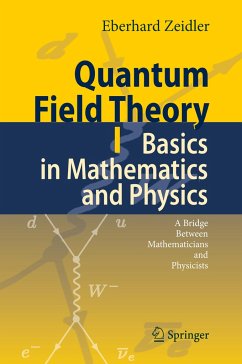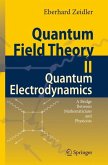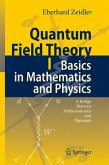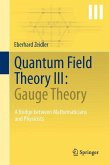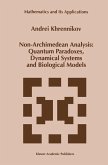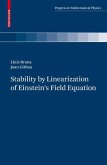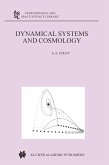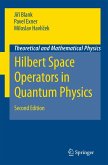1 Daß ich erkenne, was die Welt im Innersten zusammenh¨ alt. Faust Concepts without intuition are empty, intuition without concepts is blind. Immanuel Kant (1724-1804) The greatest mathematicians like Archimedes, Newton, and Gauss have always been able to combine theory and applications into one. Felix Klein (1849-1925) The present comprehensive introduction to the mathematical and physical aspects of quantum ?eld theory consists of the following six volumes: Volume I: Basics in Mathematics and Physics Volume II: Quantum Electrodynamics Volume III: Gauge Theory Volume IV: Quantum Mathematics Volume V: The Physics of the Standard Model Volume VI: Quantum Gravity and String Theory. Since ancient times, both physicists and mathematicians have tried to und- stand the forces acting in nature. Nowadays we know that there exist four fundamental forces in nature: - Newton's gravitational force, - Maxwell's electromagnetic force, - the strong force between elementary particles, and - the weak force between elementary particles (e.g., the force responsible for the radioactive decay of atoms). In the 20th century, physicists established two basic models, namely, - the Standard Model in cosmology based on Einstein's theory of general relativity, and - the Standard Model in elementary particle physics based on gauge theory. 1 So that I may perceive whatever holds the world together in its inmost folds.
"Quantum field theory combines relativity, quantum mechanics, and many-particle physics to provide a theoretical basis for the most fundamental understanding of our universe. ... it is a fun book for practicing quantum field theorists to browse, and it may be similarly enjoyed by mathematical colleagues. Its ultimate value may lie in encouraging students to enter this challenging interdisciplinary area of mathematics and physics. Summing Up: Recommended. Upper-division undergraduates through faculty." -- M. C. Ogilvie, CHOICE, Vol. 44 (9), May, 2007
"This is the first volume of a six volume book on quantum field theory. ... The main object is to explain mathematics for students or researchers in physics how to use them, and to show students and researchers in mathematics how to use them, and to show students and researchers in mathematics how to use mathematics in physics. Translations of different languages used by mathematicians and physicists for the same mathematical objects are also presented." -- Akira Asada, Zentralblatt MATH, Vol. 1124 (1), 2008
"This book on quantum field theory, consisting of over a thousand pages, is the first volume of a projected six-volume series. It alone has seventeen chapters and an appendix ... . The appendix covers notation, units, and dimensional analysis. ... Quantum field theory is one of the great intellectual edifices in the history of human thought. ... This volume differs from other books on quantum field theory in its greater emphasis on the interaction of physics with mathematics. ... an impressive work of scholarship." -- William G. Faris, SIAM Review, Vol. 50 (2), 2008
"This is the first volume of a six volume book on quantum field theory. ... The main object is to explain mathematics for students or researchers in physics how to use them, and to show students and researchers in mathematics how to use them, and to show students and researchers in mathematics how to use mathematics in physics. Translations of different languages used by mathematicians and physicists for the same mathematical objects are also presented." -- Akira Asada, Zentralblatt MATH, Vol. 1124 (1), 2008
"This book on quantum field theory, consisting of over a thousand pages, is the first volume of a projected six-volume series. It alone has seventeen chapters and an appendix ... . The appendix covers notation, units, and dimensional analysis. ... Quantum field theory is one of the great intellectual edifices in the history of human thought. ... This volume differs from other books on quantum field theory in its greater emphasis on the interaction of physics with mathematics. ... an impressive work of scholarship." -- William G. Faris, SIAM Review, Vol. 50 (2), 2008
From the reviews:
"Quantum field theory combines relativity, quantum mechanics, and many-particle physics to provide a theoretical basis for the most fundamental understanding of our universe. ... it is a fun book for practicing quantum field theorists to browse, and it may be similarly enjoyed by mathematical colleagues. Its ultimate value may lie in encouraging students to enter this challenging interdisciplinary area of mathematics and physics. Summing Up: Recommended. Upper-division undergraduates through faculty." (M. C. Ogilvie, CHOICE, Vol. 44 (9), May, 2007)
"This is the first volume of a six volume book on quantum field theory. ... The main object is to explain mathematics for students or researchers in physics how to use them, and to show students and researchers in mathematics how to use them, and to show students and researchers in mathematics how to use mathematics in physics. Translations of different languages used by mathematicians and physicists for the same mathematical objects are also presented." (Akira Asada, Zentralblatt MATH, Vol. 1124 (1), 2008)
"This book on quantum field theory, consisting of over a thousand pages, is the first volume of a projected six-volume series. It alone has seventeen chapters and an appendix ... . The appendix covers notation, units, and dimensional analysis. ... Quantum field theory is one of the great intellectual edifices in the history of human thought. ... This volume differs from other books on quantum field theory in its greater emphasis on the interaction of physics with mathematics. ... an impressive work of scholarship." (William G. Faris, SIAM Review, Vol. 50 (2), 2008)
"Volume I is divided in three parts. Part 1 has an introductory nature. ... Part II accompanies the reader through a forest of basic techniques in mathematics. ... In Part III, Zeidler presents the essential available information on heuristic magic formulas of quantum field theory. ... The presentation of the material is clear. ... For a scholar aiming to work in quantum field theory ... Zeidler can be a reference text. ... Mathematicians can find a list of topics who are still waiting rigorous treatments." (Paolo Maria Mariano, Meccanica, Vol. 46, 2011)
"Quantum field theory combines relativity, quantum mechanics, and many-particle physics to provide a theoretical basis for the most fundamental understanding of our universe. ... it is a fun book for practicing quantum field theorists to browse, and it may be similarly enjoyed by mathematical colleagues. Its ultimate value may lie in encouraging students to enter this challenging interdisciplinary area of mathematics and physics. Summing Up: Recommended. Upper-division undergraduates through faculty." (M. C. Ogilvie, CHOICE, Vol. 44 (9), May, 2007)
"This is the first volume of a six volume book on quantum field theory. ... The main object is to explain mathematics for students or researchers in physics how to use them, and to show students and researchers in mathematics how to use them, and to show students and researchers in mathematics how to use mathematics in physics. Translations of different languages used by mathematicians and physicists for the same mathematical objects are also presented." (Akira Asada, Zentralblatt MATH, Vol. 1124 (1), 2008)
"This book on quantum field theory, consisting of over a thousand pages, is the first volume of a projected six-volume series. It alone has seventeen chapters and an appendix ... . The appendix covers notation, units, and dimensional analysis. ... Quantum field theory is one of the great intellectual edifices in the history of human thought. ... This volume differs from other books on quantum field theory in its greater emphasis on the interaction of physics with mathematics. ... an impressive work of scholarship." (William G. Faris, SIAM Review, Vol. 50 (2), 2008)
"Volume I is divided in three parts. Part 1 has an introductory nature. ... Part II accompanies the reader through a forest of basic techniques in mathematics. ... In Part III, Zeidler presents the essential available information on heuristic magic formulas of quantum field theory. ... The presentation of the material is clear. ... For a scholar aiming to work in quantum field theory ... Zeidler can be a reference text. ... Mathematicians can find a list of topics who are still waiting rigorous treatments." (Paolo Maria Mariano, Meccanica, Vol. 46, 2011)

